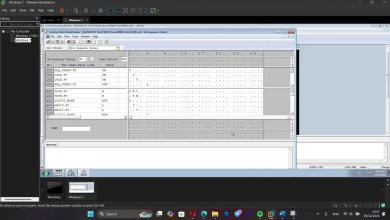How to install kali Linux on windows
Installing Kali Linux on VMware is a straightforward process. Here’s a step-by-step guide:
1. **Download Kali Linux ISO**: First, download the Kali Linux ISO image from the official Kali Linux website ( Choose the appropriate version depending on your system architecture (32-bit or 64-bit).
2. **Install VMware Workstation**: If you haven’t already installed VMware Workstation, download and install it from the VMware website ( Follow the installation instructions provided by VMware.
3. **Create a New Virtual Machine**:
– Open VMware Workstation.
– Click on “File” = “New Virtual Machine” to start the New Virtual Machine Wizard.
– Choose “Typical” and click “Next”.
– Select “Installer disc image file (iso)” and click “Browse”. Navigate to the location where you downloaded the Kali Linux ISO file, select it, and click “Next”.
– Enter a name for your virtual machine and choose a location to save it. Click “Next”.
– Set the maximum disk size for the virtual machine. The default size should be sufficient, but you can adjust it if needed. Click “Next”.
– Review the virtual machine settings and click “Finish”.
4. **Configure Virtual Machine Settings**:
– Before starting the virtual machine, you may want to customize its settings such as RAM, CPU cores, network settings, etc. You can do this by right-clicking on the virtual machine in the VMware Workstation interface and selecting “Settings”. Adjust the settings according to your preferences.
5. **Install Kali Linux**:
– Start the virtual machine by clicking on the “Power on this virtual machine” button in VMware Workstation.
– The Kali Linux installer should boot from the ISO image. Follow the on-screen instructions to install Kali Linux on the virtual machine. This typically involves selecting language preferences, configuring network settings, partitioning the disk, creating a user account, etc.
– Once the installation is complete, reboot the virtual machine.
6. **Install VMware Tools** (Optional but recommended):
– After installing Kali Linux, it’s a good idea to install VMware Tools to enhance the performance and usability of the virtual machine. In VMware Workstation, go to “VM” =”Install VMware Tools”. This will mount the VMware Tools ISO image inside the virtual machine.
– Open a terminal in Kali Linux and navigate to the mounted VMware Tools directory.
– Extract the contents of the VMware Tools archive and run the installer script. Follow the on-screen instructions to complete the installation.
– Reboot the virtual machine after installing VMware Tools.
That’s it! You should now have Kali Linux installed and running on VMware Workstation. You can start exploring and using it for various security and penetration testing tasks.
[ad_2]
source



